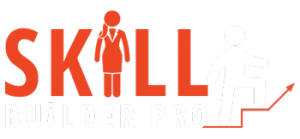Body language, whether we realize it or not, is a primary way we humans communicate with one another. We can convey our thoughts and feelings just by the movement of our bodies, all the way from our eyes down to the position of our feet.
When people interact with one another, a lot of the information they exchange is signaled by body language. The trick is to pay attention to these cues, which is why a recruiter, for instance, will focus on a person’s hand gestures to gauge their intentions. While the spoken words still matter in this situation, the way the information is conveyed with body language leaves a similarly important impression.
If you’re interested in learning more about body language to better your communication skills, it helps to understand what your body does when you’re communicating. We’ll break down the different cues you might not be aware of to help you be more mindful of the messages you send.
1. The Head
Your head can do a variety of things when you’re communicating. For instance, you might tilt it forwards or backward, or even sideways. The position of your head plays a big role in how you are perceived. For instance, keeping your head down could be taken as a sign of submissiveness, while lifting your chin up could be interpreted as being brash.
If you want to play it safe, keep your head and neck relaxed, and maintain a neutral position. This also helps keep eye contact with whoever you’re speaking to, which is always a good idea.
2. The Face
There are many ways you can express what you think or feel with your face. Quite often, you don’t even realize what you’re “saying” with your facial expressions. A clenched jaw, for instance, can signal to other people that you’re anxious, while a slight roll of the eye can be downright rude.
Even the smallest shifts in your facial expression can be quite telling. For example, the tiniest of grins when answering a serious question could make you come across as disingenuous. All these signals, when combined with what you’re saying out loud, comprise your complete response. As such, it’s important to be mindful of them so as not to be misconstrued.
3. The Body
Finally, your body is perhaps the most capable of conveying unspoken language. From hand gestures to your entire posture, many different signals can express a wide range of messages.
For example, frantic hand gestures can mean that you’re excited or nervous, which can be good or bad, depending on the context. Crossed arms say that you’re being defensive or unreceptive of what the other person is trying to say.
The way your feet are positioned is also a cue. Feet that are pointed away at who you’re speaking with usually means that you’re uninterested with the current interaction and that you’d rather be elsewhere.
Conclusion
Body language is a complex topic that we simply can’t summarize in one article. However, the point is that you need to be aware of what your body is “saying” so that you can become a better communicator.
It takes time, but gaining mastery over your body language is a vital skill that is helpful in any setting. It can help you land your dream job, form more meaningful relationships, and even make you a more confident person.
Keep the information above in mind, and start being more mindful of what messages you’re subconsciously sending. As we said earlier, the trick is to pay close attention.
Skill Builder Pro is your development training platform offering you a variety of courses to train important skills to help you in any setting. If you are looking for body language online courses, check out what we have for you!
